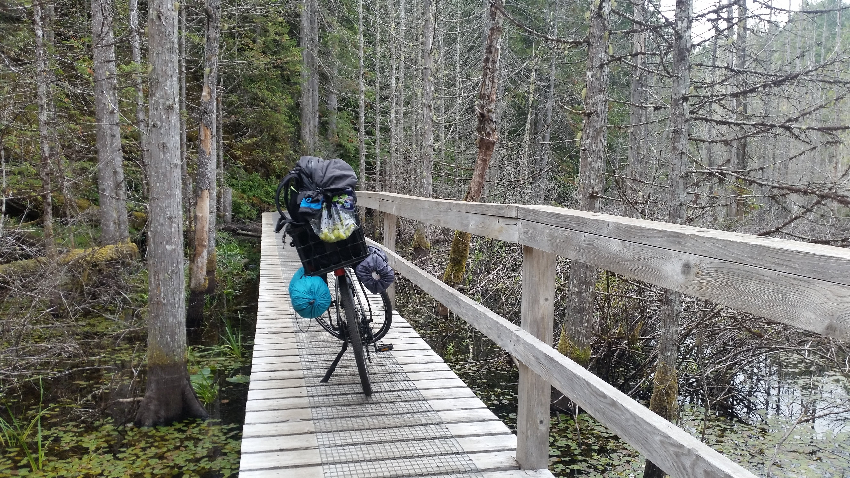I like biking, and I like camping so I was curious to see how simply I could travel as a bike camper. The hope, of course, was to reduce two of my biggest travel expenses: transportation and accommodations.
I’d biked distances before with nothing but a backpack to hold my change of clothes and such, but bike camping meant carrying a sleeping bag, pad, and tent. I decided to forgo carrying any cooking equipment by electing to eat on the road. That is done easily enough by stopping at a market each day to make sure you’re stocked until the next day.
Some things, like cheese and nuts, I’d carry with me over a few days but ready to eat meals are available almost everywhere. A few years back, my friend Darren demonstrated you could even eat cold food out of a can to avoid bringing a pot and stove. Plus there’s no clean up afterwards.
Honestly I’d been dreading this experience as I know how much I like so sleep in a comfortable bed and cook in a decent kitchen. In the past, I’d managed to allay my fears by staying in hostels or with Warmshowers hosts for most of my trip, but neither was available in the area I had planned to be on my last night.
The campground I chose was close to the water but about a mile down a dirt hiking trail from the parking lot. Fortunately most of the trail was rideable, and I arrived at the site fairly quickly. It was completely primitive: just a bare spot of ground without even toilet facilities. It was 3pm so I walked over to the water and jumped in for a swim. By 4, I was bored and pulled out my phone to do some reading. By 5, I was bored and tired so I decided to open my can of chili and eat it cold. By 6 I was ready for bed.

The first problem I discovered with primitive bike camping is that there is nothing to do for hours. I could have read more of my book, but my phone was running low on battery. The lack of power presented another problem for this experience. I relied heavily on my phone for navigation and pictures, so without an outlet, I had to conserve power.
At 7, it began to rain, and I took that as a sign it was time to go to bed. I cozied into the warmth of my tent and noticed it was still light outside. It was going to be a long night. I read a little bit before going to bed at 8, but I managed to sleep all the way until dawn. At 11 hours, that was a lot of wasted time for someone as productive as I usually am.
It had rained all night so my tent was soaking wet when I stuffed it into its sack in the morning. This was another fear I’d had in advance: if you’re on a multi-day camping trip, how do you keep everything from getting wet if the weather turns foul? This is especially crucial because a down sleeping bag does not work when it gets wet.
As I left the campsite for my last day of riding, I was glad to know I was headed for a hostel, even if I’d still have to figure out how to dry my gear when I got there. In addition to this inconvenience, and not knowing if my phone would stay charged through the day, I reflected on something else I missed while bike camping: community.
A cycling trip by oneself is pretty lonely. You spend the whole day riding alone and then you camp alone. I knew I preferred a dry bed and a nice kitchen, but I also learned that I counted on the socializing, at the end of each day, that comes of staying with other people. While you’ll still find me cycling down the road, you won’t find me camping unless it’s someplace where I have all of my comforts.

